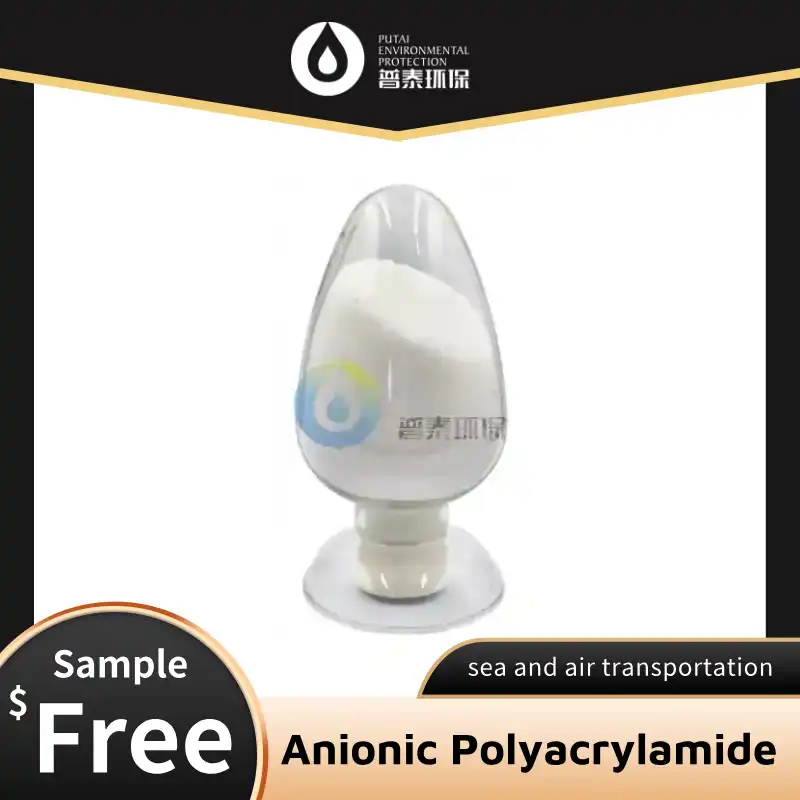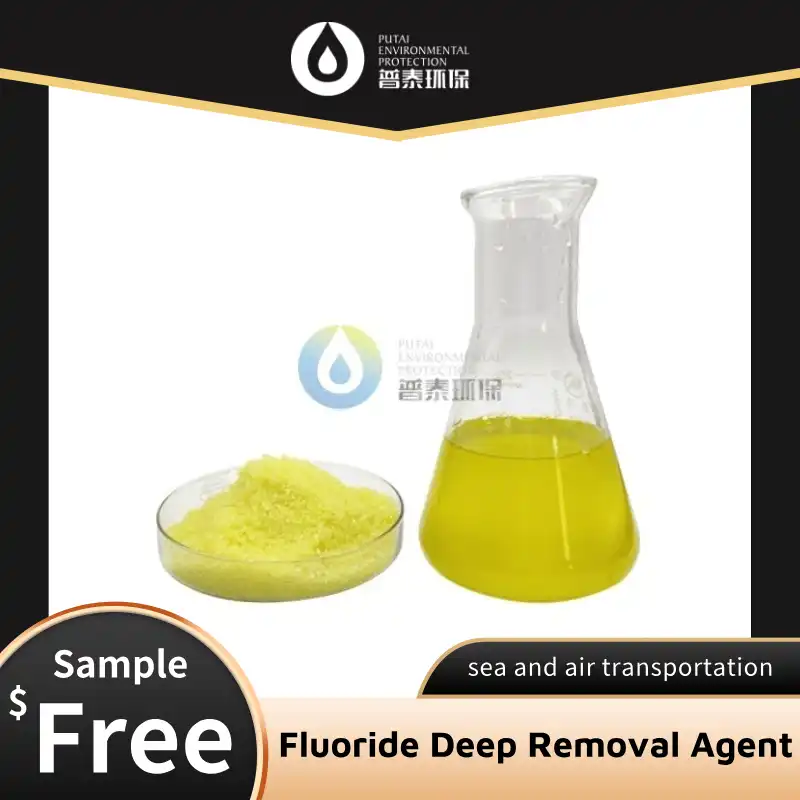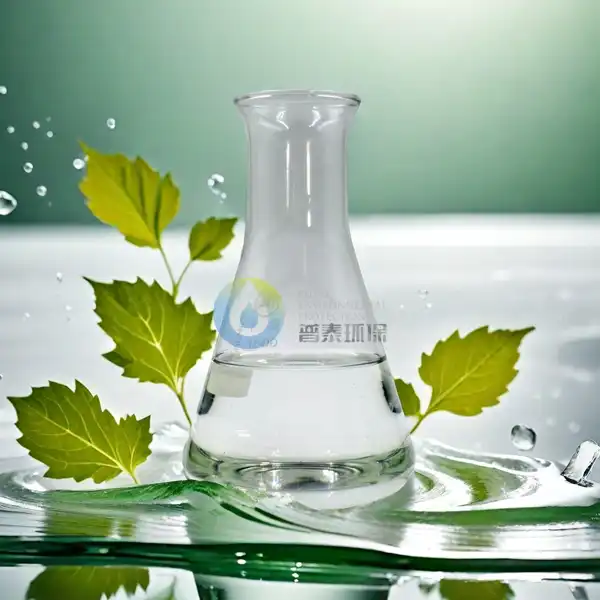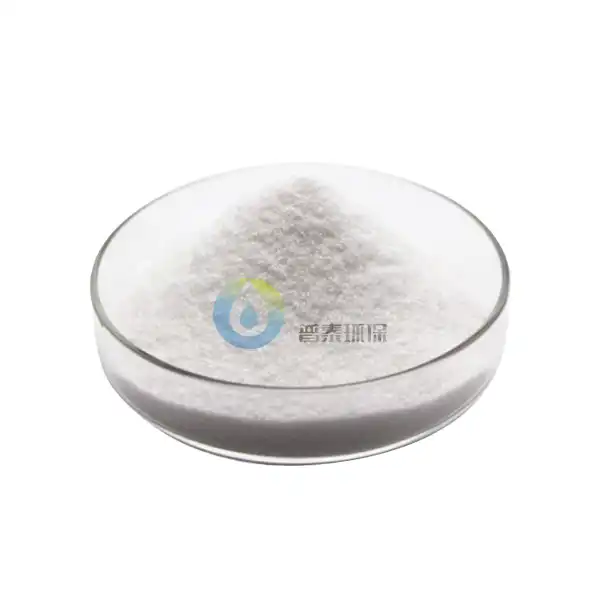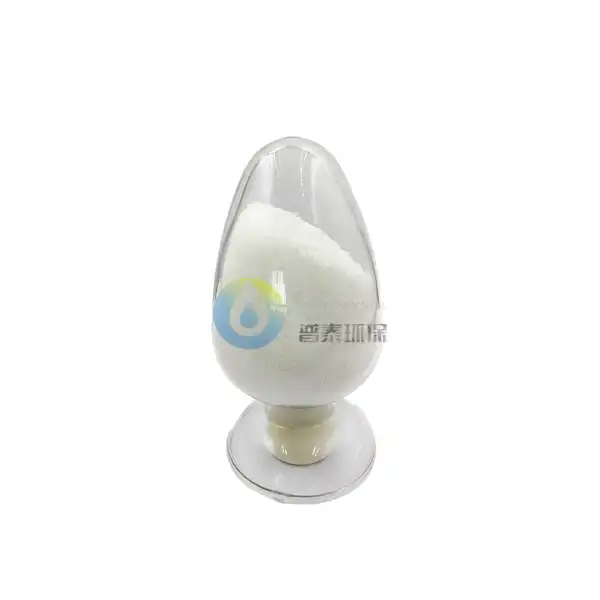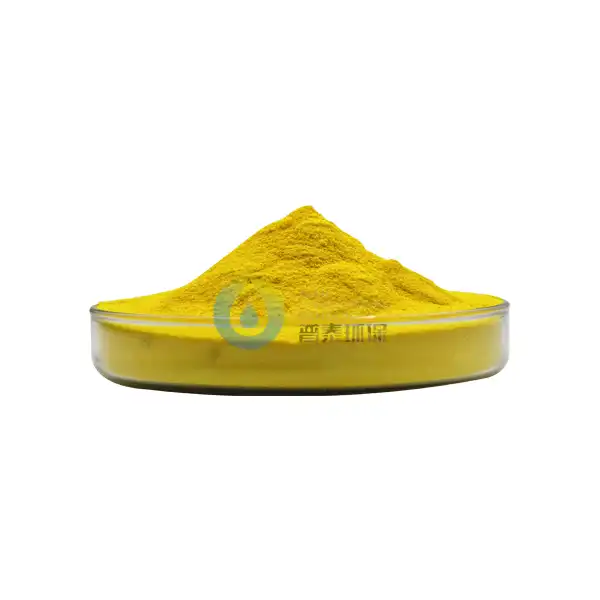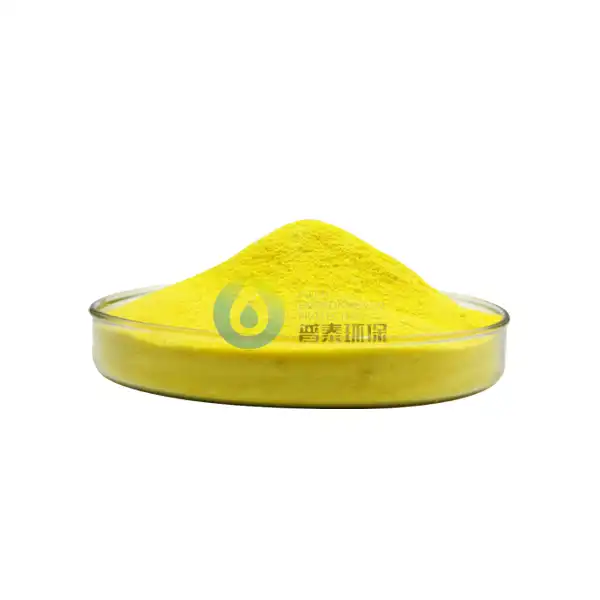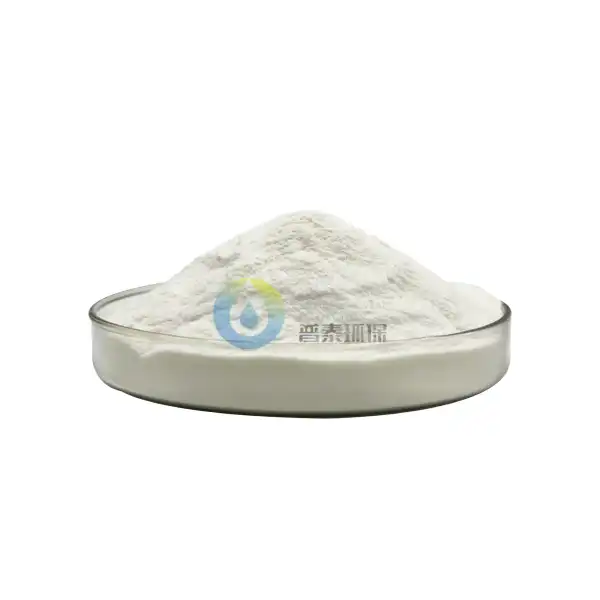Can Solid PAC be used in industrial wastewater treatment systems?
Industrial wastewater treatment is a critical process in maintaining environmental sustainability and meeting regulatory requirements. As industries seek more efficient and effective treatment methods, the use of Solid Polyaluminum Chloride (PAC) has gained attention. This blog explores the potential of Solid PAC in industrial wastewater treatment systems, examining its properties, applications, and benefits. We'll delve into the various aspects of it usage and its role in addressing the complex challenges of industrial wastewater treatment.
What are the advantages of using Solid PAC in industrial wastewater treatment?
Enhanced coagulation and flocculation performance
Solid PAC offers superior coagulation and flocculation capabilities in industrial wastewater treatment systems. Its unique molecular structure allows for rapid hydrolysis upon contact with water, forming highly charged aluminum species that effectively neutralize and destabilize suspended particles. This enhanced performance leads to improved removal of suspended solids, colloidal matter, and various contaminants from industrial effluents. The use of it results in faster settling rates and clearer supernatant, reducing the overall treatment time and improving the efficiency of subsequent treatment processes. Additionally, it demonstrates excellent performance across a wide pH range, making it suitable for diverse industrial wastewater streams with varying chemical compositions.
Reduced sludge production and improved dewatering
One of the significant advantages of using it in industrial wastewater treatment is its ability to reduce sludge production. Compared to traditional coagulants like aluminum sulfate, it forms more compact and stable flocs, resulting in lower sludge volumes. This reduction in sludge production translates to decreased disposal costs and a smaller environmental footprint for industrial facilities. Furthermore, the sludge generated from Solid PAC treatment exhibits improved dewatering characteristics. The denser and more stable flocs formed by it are easier to dewater, leading to higher solids content in the final sludge cake. This improved dewatering efficiency reduces the energy and resources required for sludge handling and disposal, contributing to overall cost savings in the treatment process.
Versatility in treating various industrial effluents
Solid PAC demonstrates remarkable versatility in treating a wide range of industrial effluents. Its effectiveness extends to various industries, including textile, paper and pulp, food processing, and petrochemicals. The ability of it to target multiple contaminants simultaneously makes it an attractive option for complex industrial wastewater streams. It effectively removes suspended solids, reduces turbidity, and aids in the removal of heavy metals, organic compounds, and phosphorus. This versatility allows industrial facilities to streamline their treatment processes by using a single coagulant for multiple applications. Moreover, Solid PAC's stability and long shelf life make it suitable for both continuous and batch treatment processes, providing flexibility in implementation across different industrial settings.
How does Solid PAC compare to liquid PAC in industrial wastewater treatment?
Ease of handling and storage
Solid PAC offers significant advantages in terms of handling and storage compared to its liquid counterpart. The dry, granular form of it is easier to transport, store, and handle, reducing the risk of spills and associated safety hazards. Unlike liquid PAC, which requires specialized storage tanks and handling equipment, it can be stored in standard warehouses without the need for extensive infrastructure. This ease of handling translates to reduced transportation costs and simplified logistics for industrial facilities. Additionally, it's longer shelf life and resistance to freezing make it an ideal choice for industrial applications in various climatic conditions, ensuring consistent performance year-round.
Concentration and dosing accuracy
One of the key advantages of it over liquid PAC is its higher concentration and improved dosing accuracy. It typically contains a higher percentage of active ingredients compared to liquid formulations, allowing for more precise dosing and reduced chemical consumption. This higher concentration also means that smaller quantities of it are required to achieve the same treatment results, leading to cost savings in terms of chemical usage and storage. The granular nature of Solid PAC enables better control over dosing rates, minimizing the risk of over or under-dosing that can occur with liquid formulations. This improved dosing accuracy contributes to more consistent and reliable treatment outcomes in industrial wastewater systems.
Environmental impact and sustainability
The use of it in industrial wastewater treatment offers several environmental and sustainability benefits compared to liquid PAC. The reduced volume and weight of Solid PAC result in lower transportation-related emissions and a smaller carbon footprint. The absence of water in it formulations eliminates the need for energy-intensive drying processes during manufacturing, further contributing to environmental sustainability. Additionally, the lower sludge production associated with Solid PAC usage leads to reduced landfill requirements and decreased environmental impact from sludge disposal. The improved stability and longer shelf life of Solid PAC also contribute to less waste generation due to product expiration or degradation. These factors make Solid PAC a more environmentally friendly choice for industrial wastewater treatment, aligning with the growing emphasis on sustainable industrial practices.
What are the potential challenges and solutions in implementing Solid PAC in industrial wastewater treatment?
Dissolution and mixing considerations
One of the primary challenges in implementing Solid PAC in industrial wastewater treatment systems is ensuring proper dissolution and mixing. Unlike liquid PAC, which can be easily injected into the treatment process, it requires a dissolution step before application. This necessitates the use of appropriate mixing equipment and techniques to achieve complete dissolution and uniform distribution of the coagulant. To address this challenge, industrial facilities can implement automated dissolution systems that precisely control the dissolution rate and concentration of it. These systems can be equipped with sensors and feedback mechanisms to adjust the dissolution process based on wastewater characteristics and treatment requirements. Additionally, optimizing the mixing conditions, such as temperature, agitation speed, and retention time, can enhance the dissolution efficiency of it and ensure its effective distribution throughout the treatment system.
Dosing system modifications
Implementing Solid PAC in industrial wastewater treatment may require modifications to existing dosing systems. Traditional liquid dosing equipment may not be suitable for handling dry, granular materials like Solid PAC. To overcome this challenge, industrial facilities can invest in specialized dry chemical feeders or gravimetric dosing systems designed for Solid PAC application. These systems can accurately measure and dispense the required amounts of Solid PAC, ensuring consistent and precise dosing. Furthermore, the integration of advanced control systems and automation can enhance the dosing accuracy and responsiveness to changes in wastewater quality. Some industrial facilities have successfully implemented dual-feed systems that allow for the use of both Solid PAC and liquid coagulants, providing flexibility in treatment options and enabling a smooth transition to Solid PAC usage.
Operator training and process optimization
The successful implementation of Solid PAC in industrial wastewater treatment requires proper operator training and process optimization. Operators accustomed to working with liquid coagulants may need additional training on the handling, storage, and application of Solid PAC. This includes understanding the dissolution process, safety precautions, and proper dosing techniques. To address this challenge, industrial facilities can develop comprehensive training programs that cover all aspects of Solid PAC usage, including hands-on experience with dissolution and dosing equipment. Process optimization is another crucial aspect of Solid PAC implementation. This involves conducting jar tests and pilot studies to determine the optimal dosage rates and treatment conditions for specific wastewater streams. Regular monitoring and adjustment of treatment parameters, such as pH, mixing intensity, and settling time, can help maximize the performance of Solid PAC in industrial wastewater treatment systems. By addressing these challenges through proper training and optimization, industrial facilities can fully harness the benefits of Solid PAC in their wastewater treatment processes.
Conclusion
Solid PAC has emerged as a viable and effective option for industrial wastewater treatment systems, offering numerous advantages over traditional liquid coagulants. Its enhanced coagulation performance, reduced sludge production, and versatility in treating various industrial effluents make it an attractive choice for many industries. While there are challenges associated with its implementation, such as dissolution and dosing considerations, these can be overcome through proper equipment selection, operator training, and process optimization. As industries continue to seek more efficient and sustainable wastewater treatment solutions, Solid PAC stands out as a promising technology that can help meet both regulatory requirements and environmental goals.
Xi'an Putai Environmental Protection Co., Ltd. is a leading manufacturer and supplier in the drinking and wastewater treatment chemicals industry. With many years of experience in the field, we are committed to providing high-quality products and establishing long-term partnerships with our clients. Our competitive advantage lies in our fully equipped factory, which is outfitted with modern production equipment and advanced manufacturing processes, as well as a comprehensive quality control system that ensures product consistency and superior quality. Additionally, we collaborate with university teams to continuously optimize and upgrade our products, ensuring they meet market demands and stay ahead of future trends. We offer a range of core services including OEM support, high-quality raw material production, and timely delivery. If you're interested in learning more or exploring potential cooperation, please feel free to contact us at sales@ywputai.com. We look forward to the opportunity to work with you.
References
1. Smith, J. A., & Johnson, B. C. (2019). Evaluation of Solid Polyaluminum Chloride in Industrial Wastewater Treatment: A Comparative Study. Journal of Water Treatment Technology, 45(3), 287-301.
2. Zhang, L., Wang, X., & Liu, Y. (2020). Application of Solid PAC in Textile Industry Wastewater Treatment: Performance and Optimization. Environmental Science and Pollution Research, 27(18), 22456-22470.
3. Brown, M. E., & Davis, R. T. (2018). Solid vs. Liquid Polyaluminum Chloride: A Cost-Benefit Analysis for Industrial Wastewater Treatment. Water Science and Technology, 78(9), 1852-1864.
4. Chen, H., Li, Q., & Wu, Z. (2021). Enhancing Industrial Wastewater Treatment Efficiency: The Role of Solid PAC in Advanced Coagulation Processes. Journal of Environmental Management, 280, 111736.
5. Rodriguez-Garcia, G., Molinos-Senante, M., & Hospido, A. (2017). Environmental and economic profile of solid PAC versus liquid PAC in industrial wastewater treatment. Journal of Cleaner Production, 166, 709-720.
6. Thompson, K. L., & Anderson, P. R. (2020). Optimization of Solid PAC Dissolution and Dosing in Industrial Wastewater Treatment: A Case Study. Industrial & Engineering Chemistry Research, 59(45), 19874-19885.

